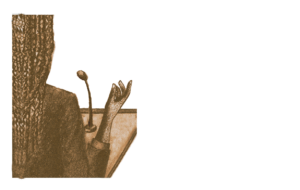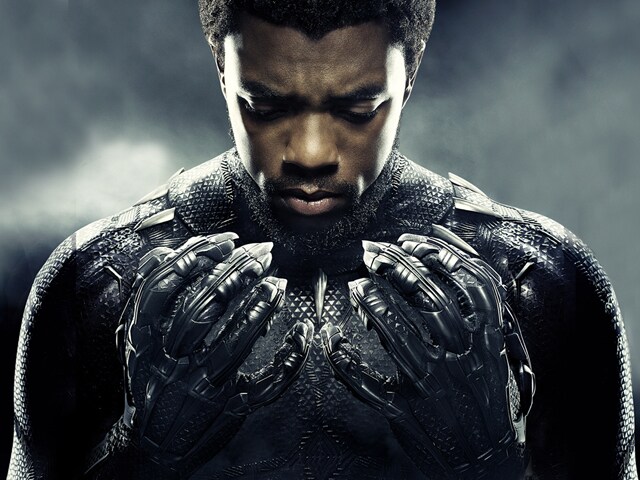The much-anticipated Marvel superhero movie Black Panther opened February 16, 2018, as an absolute cultural phenomenon in the U.S. What was driving all this unrivaled buzz?
Comic books are big, big business. “Eight-year-old boys with their allowance money aren’t what’s keeping these doors open,” says Emil Novak, owner of the 50-year-old Buffalo comic book stalwart Queen City Bookstore. “The young kids usually start with the cartoons, and they come in here when they’re teens with more money.”
Grown-up salaries like that of 27-year-old Anthony Pierce and veteran Buffalo police officer Roscoe Henderson III are what keep comic stores and franchise movies going.
Anthony believes adults like him are continually drawn in because “we see injustice in life, and identifying with these characters helps reinforce our sense of ourselves as protectors and leaders.” He attributes some of Black Panther’s mojo to “a lot of mystery surrounding this character. Everybody knows everything about Batman and Superman, there is still so much to discover here.”
“Besides,” Anthony reminds us, “the Marvel Cinematic Universe franchise has already put out seventeen other movies and all of them are amazing.”
Henderson has, at last count, somewhere around 20,000 comics, along with action figures and statuettes costing up to three hundred dollars a pop. Henderson’s been a fan dating back to third grade. In the right mood, he might even show you the Batman tattoo on his shoulder. “I took the bus to Queen City Bookstore’s old Bailey Avenue location every Wednesday as a boy.” Henderson notes that “comics have very mature storylines and sophisticated art. It is now a respected art form; some buy them for the artwork alone.” Henderson sits on the board of directors for the Albright Knox Art Gallery. As a black man from a humble East Buffalo upbringing, he feels it is noteworthy to acknowledge how his progression with comic books and its art has led him to a place where he can have influence over the diversity of exhibits being brought to the gallery.
It is no accident this film premiered in the middle of Black History Month and the timing was clearly not lost on black audiences. Around a hundred GoFundMe and Kickstarter campaigns sprung up across the country to cover the cost for children of color to see the movie in large groups. Officer Henderson puts it into perspective. “Marvel came out with the X-Men in the middle of the civil rights movement. Those characters were all about people who are different and how they were being treated.”
Budgets for Marvel movies tend to range in the neighborhood of $200 million dollars. Black Panther is the first Marvel heroes movie with that kind of firepower behind it with a black lead and mostly black cast. It would be disingenuous to talk about this movie outside of that context. Barely fifty years ago white pop star Petula Clark almost had to go to battle with her sponsor, Chrysler, over having touched Harry Belafonte’s arm during the taping of her TV show. It was considered potentially an affront to American audiences to show a black man such public parity as to touch him. “I’d like to see white kids in Black Panther Halloween costumes,” says a black Buffalo fan, “that would show me we are truly moving forward culturally.”
Dr. Tribetta Spires is a Cheektowaga veterinarian. In her early thirties, she is a gamer (Starcraft, Diablo 3), and a buff for the card game sensation “Magic: The Gathering.” Her foray into the world of comic book heroes began with the HBO animated series “Spawn,” a character which also bred a movie starring a black actor in a superhero lead role (Michael Jai White, but in head-to-toe makeup). For Dr. Spires, having a black lead and cast “gives me someone to identify with, immersing myself into the storyline more.”
But why is this so important? What is that tiny bridge of connection lacking with other characters? Dr. Spires perfectly bottom-lines black America’s juggernaut of enthusiasm behind this film.
The presence of more black characters “makes it more normal for that to be ok. From then on it will be easier for white people to be able to say ‘that was a good movie’ and not have to see white faces in order for it to be considered mainstream.”
The implications are far-reaching. For example, names like Peter, Bruce, and Diana are considered “normative” in our culture. If you Google “resumes, black names,” you’ll easily find study after study showing that DeShawn Johnson’s uniformly equivalent resume to Allison Stewart’s is often as much as half as likely to get a callback for an interview. In a world where names like T’Challa, N’Gassi and Okoye have been associated with people who are wise, rich, loyal and scientific, a Chief Finance Officer named DeShawn (or Tanisha, or Shivansh Patel Singh) could be as normative as, say, a woman firefighter.
It might be stretching it a bit to say the movie has consanguinity with Buffalo because its star, Chadwick Boseman, was here shooting the film “Marshall” only a year and a half ago. Black Panther has produced its own minor celebrity, though, in 23-year-old Anthony Johnson. While living in suburban Atlanta in 2016, he answered a casting call for extras on Facebook. They needed children, waiters, and “Tourist #2” types. Having learned a few martial arts fighting moves as a kid, Anthony stood out. He also convincingly remembered just enough about handling “kali sticks” and a “bo staff.” After a successful audition, Anthony shaved his head and stepped out of the wardrobe and makeup trailer as a Wakandan warrior. “It was very surreal,” Anthony recalled. He shot for nearly six days. “When people find out you’ve been a part of this movie, it gives you a small sense of fame, so that’s a bonus.”

